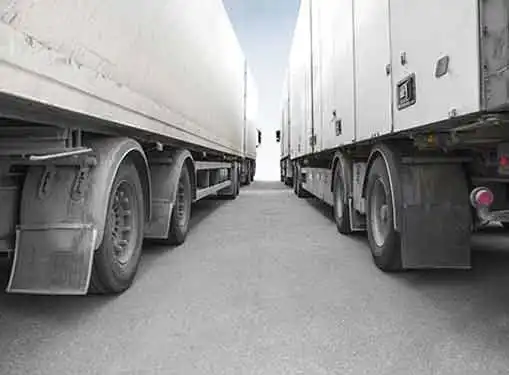Small Business Finance News
Intermodal Shipping Gets Boost From Nationwide Trucker Shortage
Written by Ken Gaebler
Published: 3/29/2014
A shortage of truckers is leading shippers to embrace a "long-haul rail, short-haul truck" strategy that routes import and export goods through inland ports.
There is no shortage of theories regarding what is causing the nation's shortage of truck drivers.

Some attribute it to demographics -- to an aging population of truck drivers who are retiring to enjoy their golden years. Others suggest that trucking is no longer an attractive profession, burdened by low pay and challenging work conditions. Still others blame new government regulations that have limited how long truckers can work. Lastly, there's the theory that the fracking energy boom has consumed trucking capacity and that the trucker shortage is due to Keystone KL Pipeline delays.
Despite the disagreements on the causes of the current truck driver shortage, few would argue that a shortage of truckers doesn't pose a massive threat to the national economy. Indeed, without a fix, transportation and logistics costs will rise, slowing economic growth and putting companies' supply chains at risk.
The writing has been on the wall for years regarding a pending trucker shortage, and smart shippers took proactive steps years ago to mitigate trucking labor shortage risks.
Wal-Mart, for example, opened up a 3.4 million-square-foot import distribution facility within the campus of a 6,000-acre integrated intermodal rail logistics hub in Joliet, Illinois. (These campuses, a relatively new phenomenon in the shipping industry, are called "inland ports.")
The Journal of Commerce reports that Wal-Mart ships imported containers 2,000 miles on double-stack trains from West Coast ports to the BNSF Railway Logistics Park that is part of the Joliet inland port, built by industrial property developer CenterPoint Properties.
The containers are then trucked barely half a mile to the Wal-Mart distribution center. From there, merchandise is shipped to smaller regional facilities throughout the Midwest or delivered to stores in the Chicago area.
This switch to intermodal logistics provides a number of benefits to companies like Wal-Mart. Their supply chains are less reliant on truck drivers, mitigating the risk of driver shortages as well as the risk of a dramatic rise in fuel prices. Shipment by rail also is more eco-friendly because, unlike gas-fueled trucks, trains do not emit greenhouse gases in large quantities.
Inland ports in the Midwest should be the biggest beneficiaries of the switch to intermodal because locating a facility in the Midwest provides a hedge against labor disputes on the coastal ports. If West Coast ports shut down this year due to labor disputes, as some are predicting, a distribution center in the Midwest can easily re-route shipments to and from East Coast ports without dramatically increasing supply chain costs.
Of course, intermodal is not a silver bullet. Despite its many advantages, intermodal shipping can, like other shipping methods, be subject to adverse weather conditions. In a recent article on intermodal shipping, Bloomberg BusinessWeek quoted Terrence Matthews, president of the intermodal division of J.B. Hunt Transport Services, as saying that weather-related disruptions in the First Quarter created a shipping backlog, with some shipping companies "thousands of loads behind schedule and still playing catch-up."
We should also note that there are other solutions to the trucker shortage. Shippers and trucking companies are creating alliances with trucking schools to accelerate the creation of a new generation of truckers. Women and military veterans are being aggressively recruited to the trucking industry.
Still, it seems that intermodal logistics solutions represent the best and fastest way to alleviate the many supply chain problems caused by the trucking shortage. According to BNSF, a typical intermodal train takes the equivalent of 280 trucks off the highways, so the obvious solution to not having enough truck drivers in the United States is to move more container cars onto trains.
As a result of these market dynamics, intermodal transport activity is growing rapidly. In fact, the Intermodal Association of North America (IANA) reports that, on an annual basis, more than 25 million containers and trailers are transported using intermodal transportation. Indeed, intermodal domestic container volume has more than doubled in the past ten years, making it clear that intermodal is now an accepted logistics choice for shippers of international and domestic goods.
The bottomline? With no quick solutions in sight for the trucking industry's labor shortage, expect more shippers to set up shop within inland port campuses to minimize transportation costs.
As companies nimbly make adjustments for a world with fewer truck drivers, embracing intermodal transport and hybrid supply chains, those businesses that rely on imported goods or that export goods may find that their cost structures stay intact. Companies, big and small, will be able to maintain profit margins and avoid a dangerous inflationary blow to a recovering economy.
Share this article
About Our Small Business News
Our entrepreneurial news is packed with the latest news for small business startups and entrepreneurs. Find helpful entrepreneur resources about small business management, financing, marketing & technology.
Additional Resources for Entrepreneurs
